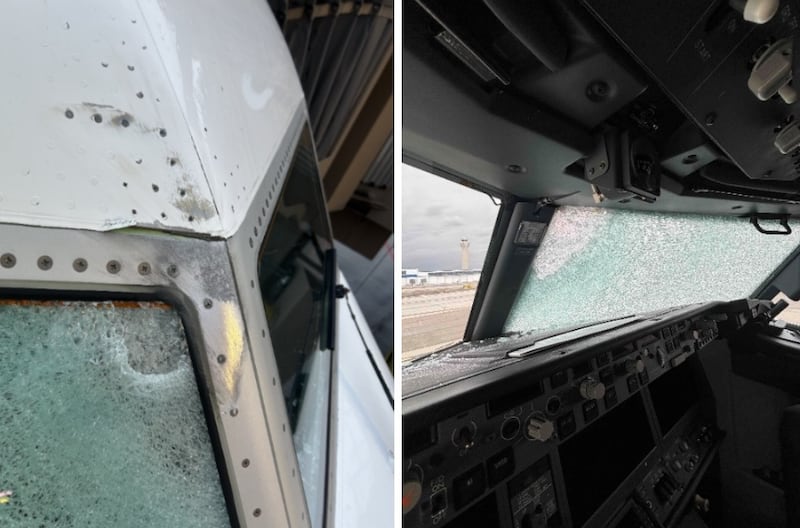The captain of a United Airlines flight bound for California said he noticed an object “distant on the horizon,” but was unable to adjust the plane’s course before a midair collision that smashed the plane’s windshield, forcing an emergency landing in Salt Lake City last month.
National Transportation Safety Board officials released harrowing details about the incident over Utah in a six-page preliminary report on Thursday, determining that the object was likely a commercial weather balloon.
The collision occurred shortly before 6:45 a.m. on Oct. 16, while the Boeing 737-8 was cruising at approximately 36,000 feet altitude near Moab. It had taken off from Denver and was headed to Los Angeles with 112 people on board, including the captain, crew and passengers.
After seeing the object, the captain went to alert the first officer, but not in time before a “significant impact” with the front windshield on the first officer’s side, accompanied by a “loud bang,” according to the report. The impact caused significant damage to the plane’s window, despite its multiple protective layers designed to withstand collisions with objects like large birds.
“The impact resulted in both pilots being showered with pieces of glass,” it said. “The captain sustained multiple superficial lacerations to his right arm.”
The captain treated his own wounds and guided the plane to a safe landing at Salt Lake City International Airport. Nobody else on board the flight was injured.
Federal officials began searching for weather balloons, aircraft or anything else that could have created as much damage at such a high elevation. That’s when they found that WindBorne Systems, an aerospace company that specializes in weather balloons, had lost contact with a balloon it had launched from Spokane, Washington, the day before the incident.
Data the company provided to the NTSB shows that the balloon first began flying south over Oregon and Nevada, then swept east and moved through southern Utah. It appeared to be near Moab at the time of the midair collision, and stopped communicating about the same time as the collision, while at nearly 36,000 feet in elevation. It appeared to be a similar path to the United flight when investigators reviewed flight data.
It’s still unclear why it did as much damage as it did. All of WindBorne’s weather balloons include a balloon envelope with lift gas, as well as an avionics package for flight control and communications, but metal or “high-stiffness structural elements” aren’t used to help “minimize harm in the event of an impact during flight or landing,” the report states.
The plane’s damaged windshield was removed and sent to Washington, D.C., for further analysis.
Federal officials said the incident remains under investigation.

